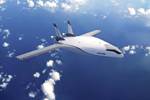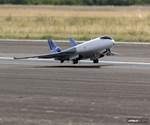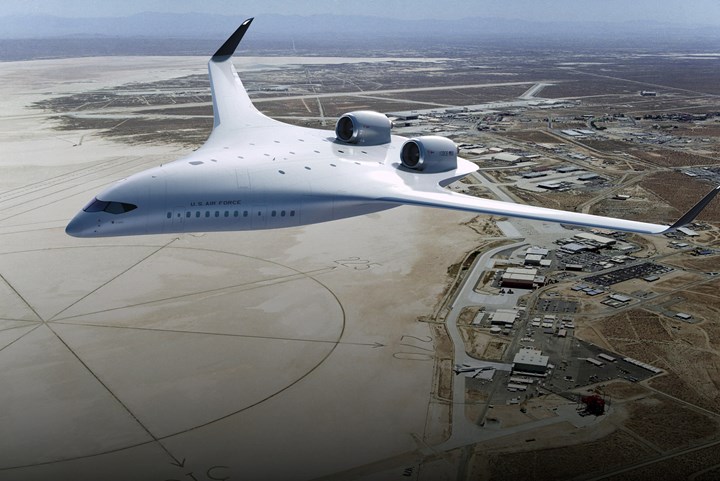JetZero accelerates BWB airliner development with $235 million Air Force award
The commercial/military composite aircraft design will offer a 50% reduction in fuel burn and emissions with potential for future conversions to hydrogen.
An artist’s rendering of the JetZero commercial jetliner derivative of the company’s Air Force BWB technology demonstrator. Photo Credit: JetZero
The U.S. Air Force is investing in JetZero’s (Long Beach, Calif., U.S.) all-composite blended wing body (BWB) aircraft design, which is said will reduce fuel consumption, cut emissions and noise and provide an improved airline passenger experience. The company will build a full-scale demonstrator to validate BWB performance.
JetZero’s demonstrator, the first in a proposed family of BWB aircraft, uses current engines and systems. The BWB aircraft, a design that has been under study by NASA and others for three decades, lends itself to conversion in the future to hydrogen propulsion, which would produce zero carbon emissions.
Under the terms of the award from the Department of Defense’s (DoD) Defense Innovation Unit (DIU), JetZero will receive $235 million over a 4-year period, culminating in first flight of its full-scale demonstrator by the first quarter of 2027. The DIU was founded in 2015 to help the U.S. military make faster use of emerging commercial technologies.
JetZero is collaborating with Northrop Grumman (Denver, Colo., U.S.) and Scaled Composites (Mojave, Calif., U.S.), that bring extensive experience in advanced aircraft design, manufacturing, and mission systems integration to build and test the demonstrator. In addition, JetZero has selected Pratt & Whitney (East Hartford, Conn., U.S.) GTF engines to power the demonstrator, with Pratt & Whitney Gatorworks supporting JetZero with design and integration of the propulsion system within the demonstrator.
“The BWB is the best first step on the path to zero carbon emissions. It offers 50% lower fuel burn using today’s engines and the airframe efficiency needed to support a transition to zero carbon emissions propulsion in the future,” JetZero CEO Tom O’Leary says. “No other proposed aircraft comes close in terms of efficiency.”
JetZero is leading efforts to expand BWB technology and demonstrate its capabilities for the future of aviation and the climate for both military and commercial markets.
Related Content
-
Welding is not bonding
Discussion of the issues in our understanding of thermoplastic composite welded structures and certification of the latest materials and welding technologies for future airframes.
-
A new era for ceramic matrix composites
CMC is expanding, with new fiber production in Europe, faster processes and higher temperature materials enabling applications for industry, hypersonics and New Space.
-
Composites manufacturing for general aviation aircraft
General aviation, certified and experimental, has increasingly embraced composites over the decades, a path further driven by leveraged innovation in materials and processes and the evolving AAM market.

















